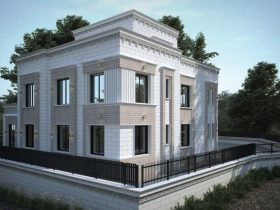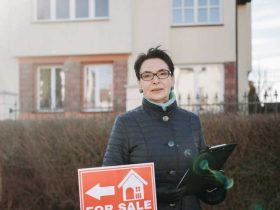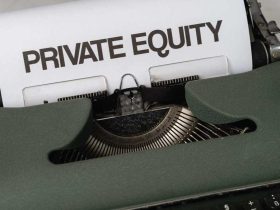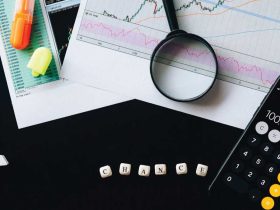In the current economic scenario, economic cycles are revealed as intrinsic elements that shape global financial health. The real estate sector is no stranger to this and its performance is closely linked to economic fluctuations.
What are business cycles?
Business cycles are recurring fluctuations in the economy that include periods of expansion and contraction. They are a natural part of the functioning of the economy and can be influenced by a wide variety of factors. Among the most important are: monetary policy, fiscal policy, sociological changes, changes in demand or business expectations, economic shocks, technology, international events…
How do economic cycles affect the real estate market?
Business cycles have significant implications for individuals, businesses and governments, affecting financial stability, employment, inflation and overall economic well-being.
The real estate market cannot be less and is closely linked to the development of the economic cycle, generally classified as a sector known as “cyclical”, that is, those that are sensitive to economic cycles, and whose performance is closely linked to these phases of expansion and contraction of the economy.
These sectors tend to experience changes in their levels of activity and profitability in response to general economic conditions and, therefore, understanding their evolution and possible impacts can be crucial for economic and financial decision-making.
Any medium-long-term real estate investment strategy should thoroughly analyse the market and its relationship with the real estate cycle, as well as identify the main drivers that influence possible imbalances between supply and demand. This will allow us to detect trends, anticipate certain events and make decisions. In short, take advantage of opportunities and try to mitigate the risks associated with each phase of the economic cycle.
Depending on the real estate segment we are in, we can find more or less resilient behaviours depending on other factors. For example, the tertiary or industrial sectors are closely linked to economic activity, while other segments such as rural properties or even in some cases residential (necessity goods) can present anti-cyclical behaviour in some situations.
Phases of economic cycles and their impact on the real estate market
Below we briefly review the 4 general phases that all economic cycles tend to share and their impact on the real estate market:
Phase 1: Expansion
During this phase, the economy experiences sustained growth in output, employment, and consumption. Consumer and business confidence is high, leading to increased investment and spending. Economic indicators such as GDP and employment typically show a positive increase during this period.
Impact on the real estate market:
This is a period of general decline in stock (supply) due to increased demand, for purchase, rental and new construction. Within this phase, we could distinguish two periods, an initial period of recovery and an expansion period.
The recovery phase is characterised by a decrease in the stock of vacant homes, but still little development activity. Rentals predominate over purchases. This period would be the most interesting from an investment point of view for the acquisition of real estate assets.
As market confidence and expectations improve, we would move into the expansion period, with a general increase in investment in real estate assets, as well as in development activity. As a consequence of this imbalance, asset prices tend to rise.
Interest rates are usually low at this stage, which further encourages investment since loans through financial institutions are more accessible. Indebtedness therefore increases.
Phase 2: Boom
This is the highest point of the economic cycle, marked by maximum economic growth. During this phase, economic activity is at its peak, there is a strong demand for assets such as stocks and real estate. As a result of rising inflation, Central Banks begin to raise interest rates.
Impact on the real estate market:
At this time, we would find ourselves at high price levels and assets will begin to take longer than usual to sell. To respond to the high demand, the different agents in the real estate market have put in place all the mechanisms to increase supply (land development and developer activity, which would be at their highest level).
The market is at a critical moment, as any sign of resentment in demand will cause a significant imbalance with respect to supply (this phase of the real estate cycle is also known as a state of hyper-supply). Prices are reaching their maximum levels and speculation is increasing.
Depending on the degree or intensity of the previous expansion phase (volume of supply, debt and price levels) we could face a real estate bubble.
Phase 3: Contraction
In this phase, the economy begins to slow down, and economic growth slows or stagnates. Demand for goods and services decreases, which can lead to a reduction in output and employment. Asset prices may begin to fall, and business and consumer confidence weaken. There is usually an increase in interest rates.
Impact on the real estate market:
This cooling is the beginning of a change in trend, real estate asset prices may stabilize or decrease, and although construction is reduced, it is not paralyzed due to the inertia and deadlines of building works. The imbalance between supply and demand is becoming evident.
Phase 4: Recession
When the contraction deepens and becomes prolonged, a recession occurs. This phase is characterized by a significant decrease in economic activity, a higher unemployment rate, and a drop in output. During recessions, governments and central banks typically implement policies to stimulate the economy and encourage recovery.
Impact on the real estate market:
Property prices tend to fall significantly, construction is drastically reduced and demand for property decreases significantly. At the end of this phase, we find the lowest price levels and the highest stock. The recovery phase begins again in search of equilibrium.















Leave a Reply